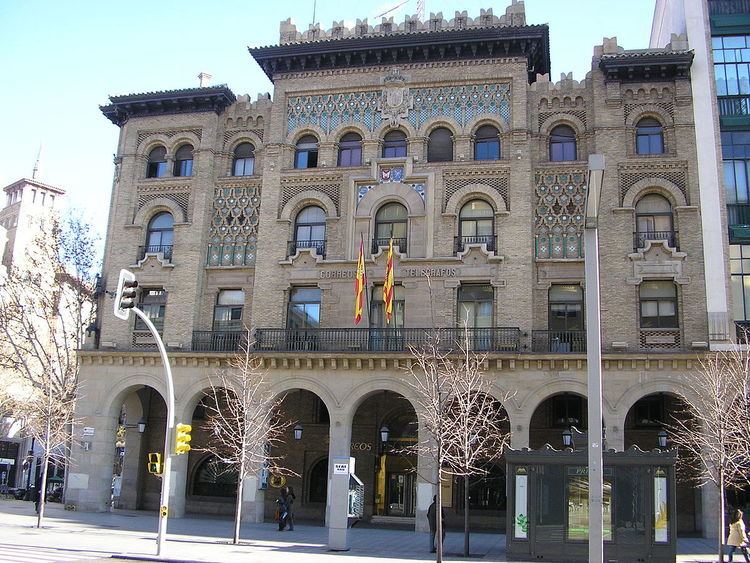 | ||
The Neo-Mudéjar is a type of Moorish Revival architecture. In Spain, this architectural movement emerged as a revival of the Mudéjar style. It appeared in the late 19th century in Madrid, and soon spread to other regions of the country. Such architects as Emilio Rodríguez Ayuso perceived the Mudéjar art as characteristical and exclusive Spanish style. They started to construct buildings using some of the features of the ancient style, as horseshoe arches, arabesque tiling, and the use of the abstract shaped brick ornamentations for the façades.
Contents
History
The first examples of the Neo-Mudéjar style were Madrid's (now demolished) Plaza del Toros (a bullring) built in 1874 and the Aguirre School, designed by Rodríguez Ayuso, and Casa Vicens by Gaudí. The style became then a strong, almost "compulsory" reference for the construction of bullfight rings all around Spain and beyond the borders, to Portugal and the Hispanoamerican countries.
In Madrid it became one of its most representative styles, not only for public buildings, like Escuelas Aguirre or the Bullring of Las Ventas but also for housing. The use of cheap materials, mainly brick for exteriors, made it a popular style in the new neighborhoods.
Neo-Mudéjar was often combined with Neo-Gothic by architects as Francisco de Cubas, Antonio María Repullés y Vargas or Francisco Jareño. After the Ibero-American Exposition of 1929 in Seville, another stream of Neo-Mudéjar features appeared: the Andalusian Architectural Regionalism. The Plaza de España (Seville) or the ABC newspaper headquarters (Madrid) are examples of this new style that combined traditional Andalusian architecture with Mudéjar features.
